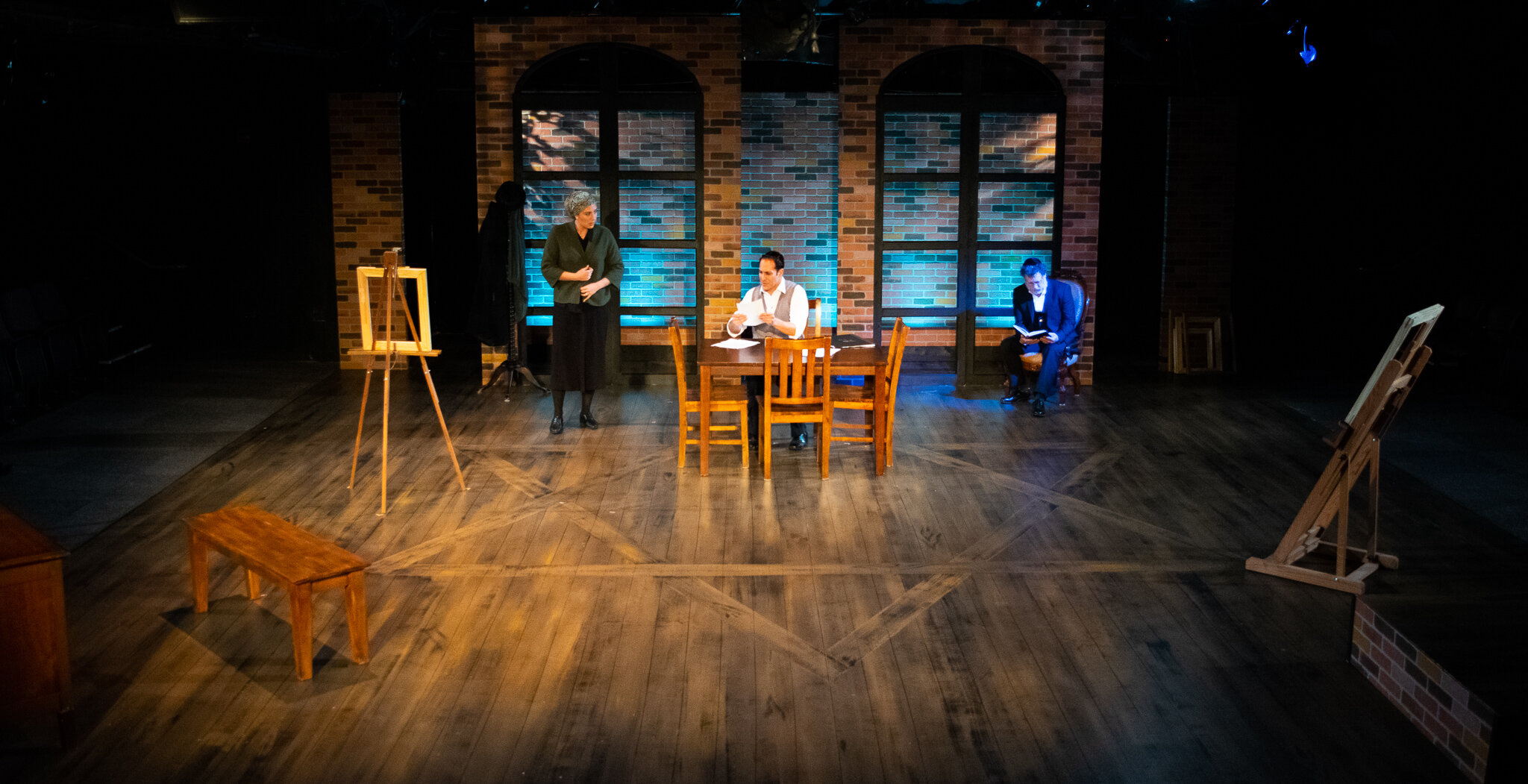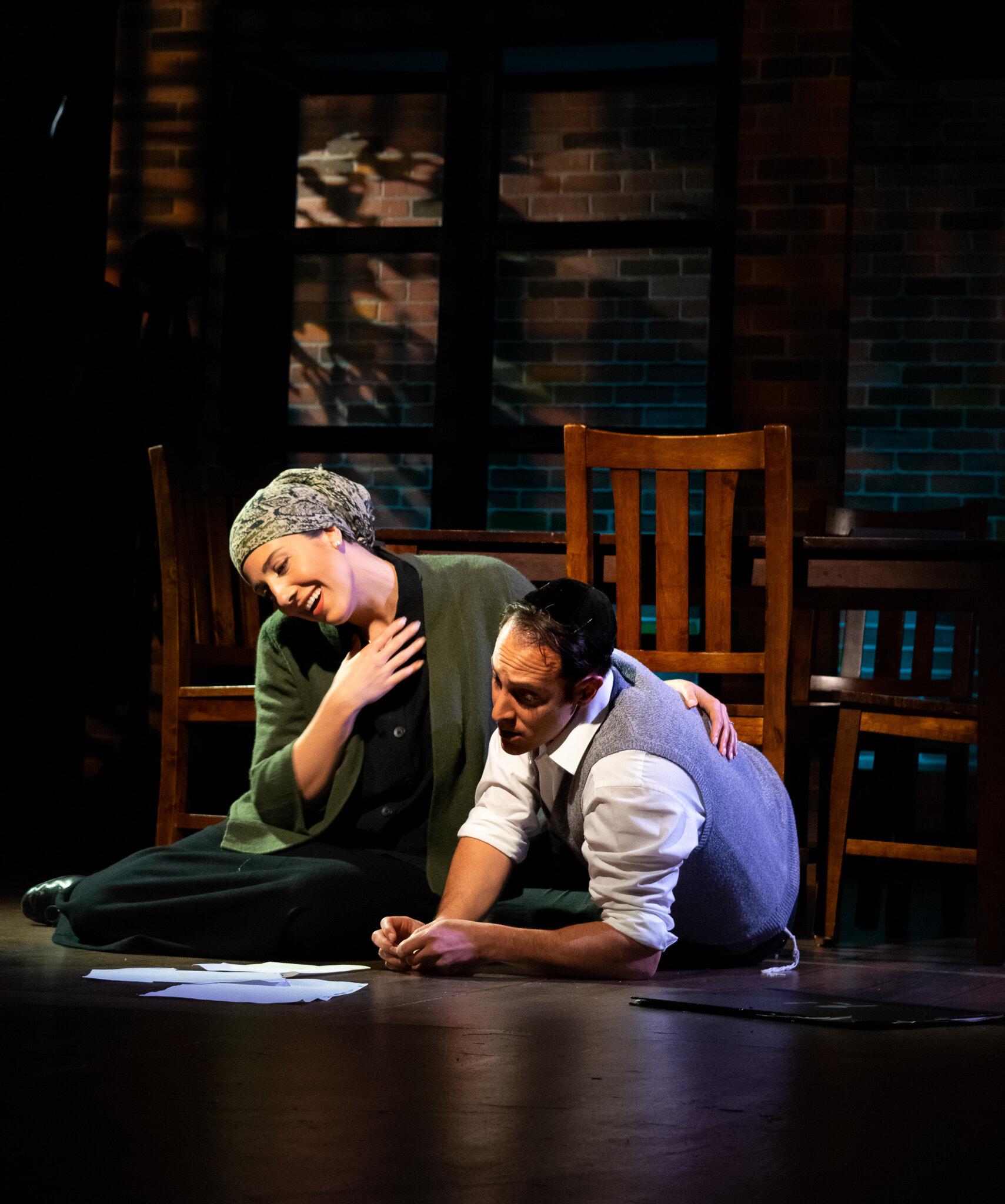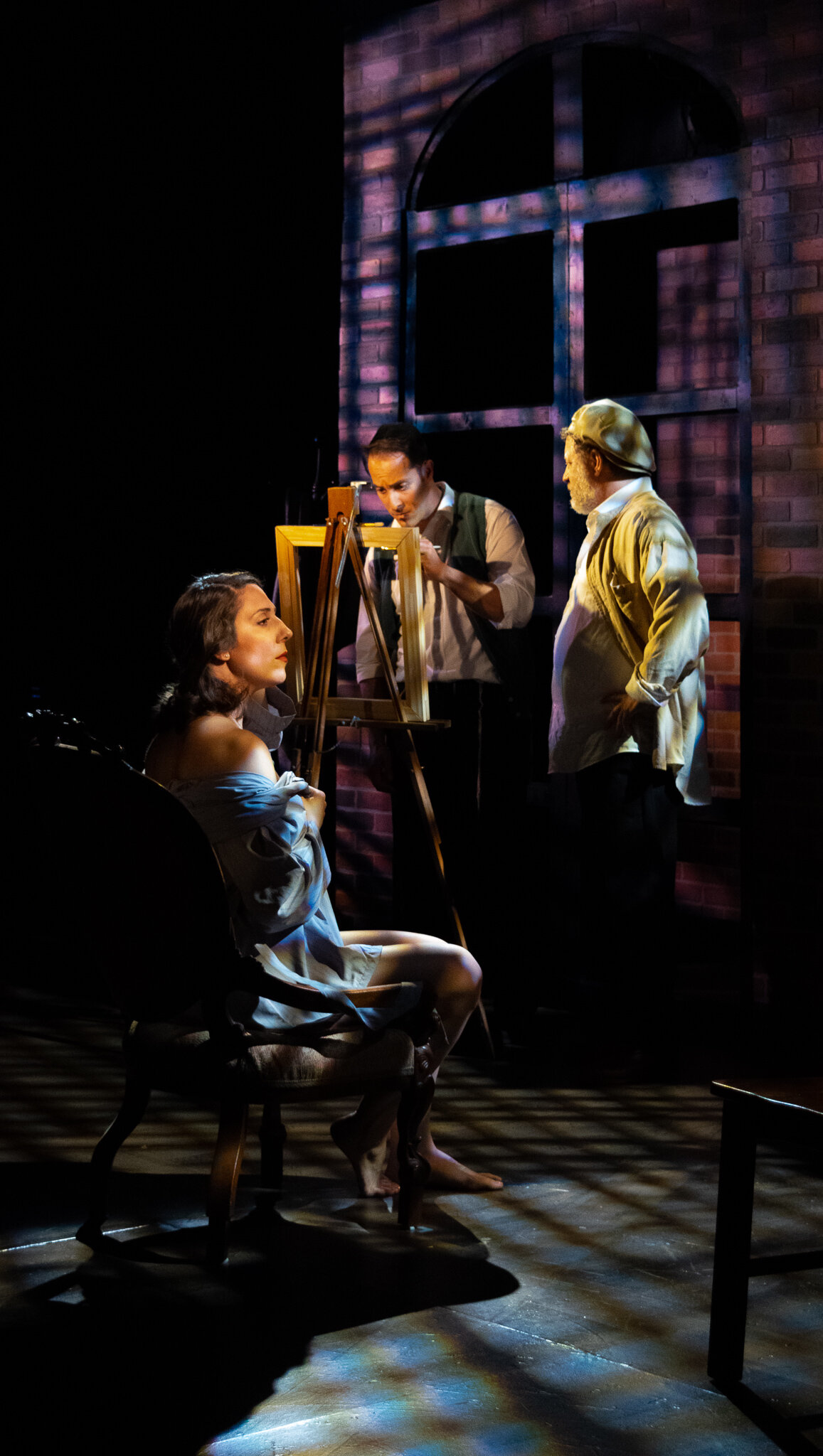“An intelligent and passionate production”
By Aaron Posner
Based on the book by Chaim Potok
Directed by Joseph Discher
Scenic Design by David Lewis
Lighting Design by Joseph Beumer
Costume Design by Lisa Steier
Sound Design by Rider Q. Stanton
Production Stage Manager - Mollie Cook*
THE CAST
Jordan Sobel* | Asher Lev
Dan Shor* | The Men
Stefanie Londino | The Women
*member Actor's Equity
religion: 1: the belief in a worship of a superhuman controlling power, especially a personal God or gods. 2: commitment or devotion to religious faith or observance. 3: a personal set or institutionalized system of religious attitudes, beliefs, and practices.
art: the expression or application of human creative skill and imagination, typically in a visual form such as painting or sculpture, producing works to be appreciated primarily for their beauty or emotional power.
In My Name is Asher Lev, the Rebbe, spiritual leader of the Hasidic community, says: “A life should be lived for the sake of heaven.” Asher’s mentor, the artist Jacob Kahn tells him: “An artist is responsible to his art! Just that. Anything else is propaganda.” Who is right? How can a young Hasidic boy from Brooklyn reconcile two powerful forces living within him—faith and creativity—which seem to be at odds with each other? Thus begins Asher Lev’s challenging journey; a story of family and responsibility, suffering and sacrifice, tradition and truth. These are the powerful themes that drive the play, but what is at the heart is even more profound and universal.
When I was young, I would often look at myself in the mirror for a long time. Not for vanity. But because I was so curious about the person on the other side. I would look into my own eyes searching for…myself in my face. The real me…I would wonder who I was supposed to be. What I was supposed to become. As long as I could remember I’d been doing that.
This, to me, is the most important part of the story, for all of us. For many of us may not have first-hand experience with artistic endeavors or the struggles that often accompany them—whether writing a book, composing a song, or putting brush to canvas and painting a masterpiece—but we can connect on the deepest level with what Asher ultimately seeks: to know who he is and to be true to himself. How much of our lives have we spent trying to figure out just who we are? To me it seems to be a continual journey. There is comfort and inspiration in Asher’s final message: no one can tell you who or what you are. Only you can decide that.






